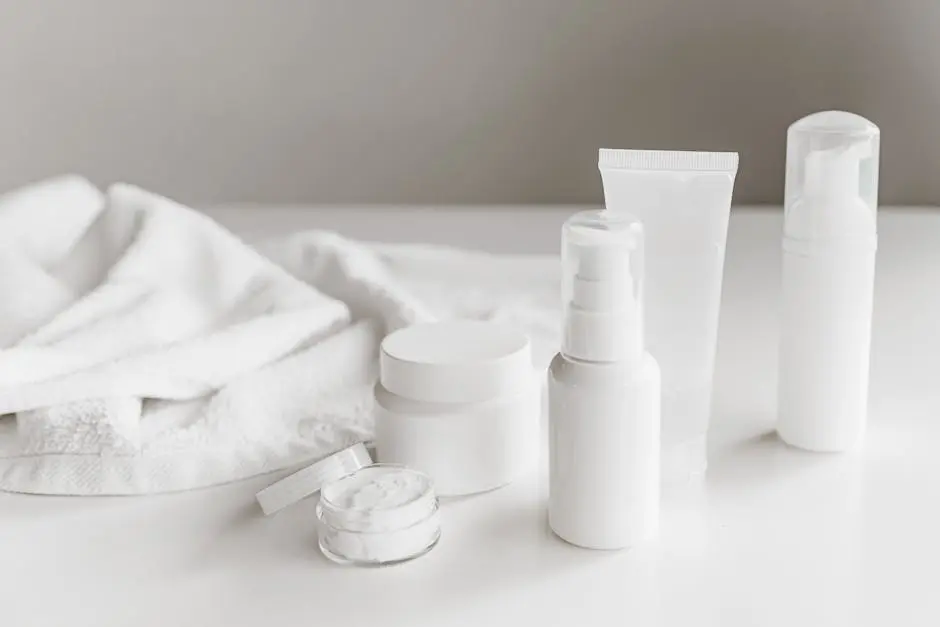In the world of skincare, terms like retinol and retinoid are often used interchangeably, leading to confusion about which is right for your skin. Both are powerful ingredients known for their anti-aging properties, but they have key differences that affect how they work and who should use them. In this blog, we’ll break down the essentials of retinol and retinoids, making it easier for you to navigate your skincare journey.
Understanding Retinol: The Basics
Retinol is a type of retinoid that you’ll commonly find in over-the-counter skincare products. It is a derivative of vitamin A and is praised for its ability to improve skin texture, reduce fine lines, and enhance collagen production. However, its effects are more gradual compared to stronger retinoids.
The appeal of retinol lies in its gradual and gentle impact on the skin. Unlike more potent retinoids, it requires a conversion process to retinoic acid, the active form that directly interacts with skin receptors. This conversion means that retinol’s effects manifest over time, making it a suitable option for those seeking consistent, sustainable skin improvements. Given its compatibility with many skin types, retinol is often recommended as an introductory retinoid for users looking to ease into vitamin A derivatives without overwhelming their skin.
Moreover, retinol’s accessibility is a pivotal factor in its popularity. As an ingredient in many night creams and serums, consumers can easily integrate it into their evening routine, letting the ingredient work overnight when skin is naturally in repair mode. Regular users of retinol often report smoother, more even-toned skin, with gradual improvements in fine line visibility. Patience is key with retinol; consistent use over several months is where its true benefits shine, and combining it with a well-rounded skincare regimen amplifies its effects.
What Are Retinoids?
Retinoids, on the other hand, is an umbrella term for vitamin A derivatives, which include retinol, retinaldehyde, adapalene, and tretinoin. These can vary in strength and are commonly used to address acne, wrinkles, and age spots. Prescription-strength retinoids typically offer more potent results but may come with increased side effects.
The strength and formulation of retinoids set them apart in the realm of skincare. With a spectrum ranging from more accessible, milder options like adapalene, available as an over-the-counter treatment, to powerful prescription versions such as tretinoin, retinoids cater to a variety of skin issues. Their primary role is often in accelerating cell turnover, refining pore structure, and promoting youthful skin by boosting collagen. While their impact is impressive, potential users must be mindful of how their skin reacts to these potent formulations. Consulting a dermatologist can provide crucial insight into which retinoid strength matches specific skin concerns and tolerances.
Their capability in rapidly addressing skin concerns has placed retinoids in high demand. Advanced formulations, particularly those containing tretinoin, are revered for their efficacy in treating moderate to severe acne and pronounced signs of aging. These potent versions work by directly regulating the DNA transcription that influences cell behavior. However, alongside their benefits, they can trigger irritation, dryness, and sensitivity, especially during the initial phase of use. Therefore, it is often recommended to start with lower concentrations and gradually increase usage frequency under professional guidance to minimize potential adverse effects.
Key Differences Between Retinol and Retinoids
The primary differences between retinol and retinoids lie in their formulation strength, availability, and speed of effectiveness. While retinol is gentler and gradually transforms into retinoic acid in the skin, retinoids, especially prescription versions, contain more direct forms of retinoic acid, providing faster and more dramatic results.
Another distinction is how the skin tolerates these compounds. Retinol, being a precursor form, allows users to avoid much of the initial irritation and sensitivity that can accompany retinoic acid treatments. In contrast, direct retinoids do not require this conversion, resulting in swifter effects at the potential cost of increased skin upheaval during the adaptation phase. Users need to handle retinoids thoughtfully, ensuring a gradual introduction into their regimen to allow the skin to adjust. This step is crucial for minimizing common side effects associated with these potent skincare ingredients. A balanced approach is key, encouraging consistent use while keeping skin health as a priority.
Who Should Use Retinol?
Retinol is an excellent choice for those new to vitamin A derivatives or those with sensitive skin. It’s also ideal for individuals looking for modest anti-aging benefits without the potential irritation associated with stronger retinoid formulations.
Retinol fits well into the routines of users who prioritize a steady and mild approach to skincare enhancement. Because it functions at a slower, more controlled pace compared to stronger retinoids, individuals can maintain their usual skincare regimen while slowly integrating retinol without a harsh transition. For those cautious about skin sensitivity or existing conditions like rosacea, retinol offers a pathway to improved skin texture and tone without overwhelming side effects. As part of a comprehensive strategy including gentle cleansers, barrier-supporting moisturizers, and diligent sun protection, retinol can achieve significant results over time.
When to Consider Retinoids
If you’re dealing with more pronounced skin concerns such as severe acne or deeper wrinkles, retinoids might be the way to go. These are powerful tools in a dermatologist’s arsenal and may deliver quicker results than retinol. However, they should be used with caution, ideally under the guidance of a skincare professional.
Retinoids offer a more aggressive approach for those experiencing significant skin aging, persistent acne blemishes, or conditions like hyperpigmentation. By opting for prescription-strength retinoids, users often witness transformative skin improvements. However, due to the robust nature of these compounds, their use is often accompanied by a ‘retinization period.’ This period, marked by potential initial irritation, can deter some users from continuing treatment without adequate preparation and support, highlighting the importance of dermatologist supervision for optimal outcomes.
Engaging with expert skincare advice can optimize the retinoid experience, providing personalized guidance about potential adjustments in frequency or formulation to align with specific skin goals. Combining retinoids with other strategic treatments such as chemical exfoliants or soothing, hydrating serums can result in well-rounded, effective skincare strategies that protect the skin barrier while addressing deeper concerns efficiently.
Choosing the Right Ingredient for Your Skin
Understanding the differences between retinol and retinoids can help you make informed decisions about your skincare routine. Whether you’re looking to reduce the appearance of fine lines or boost your skin’s overall radiance, choosing the right ingredient is key. Always remember to consult with a skincare professional if you’re unsure which product best suits your needs, and enjoy the journey to healthier, more youthful-looking skin. For further guidance on incorporating these ingredients, feel free to visit our homepage.






